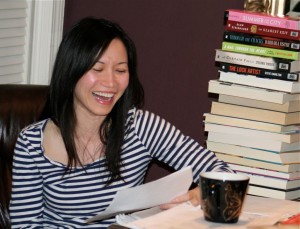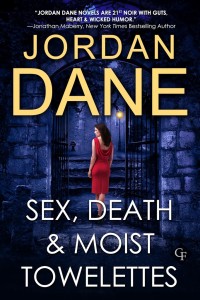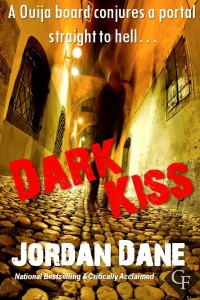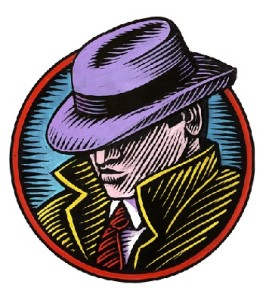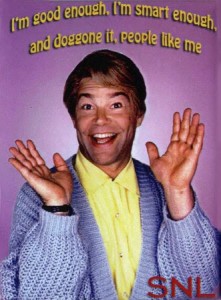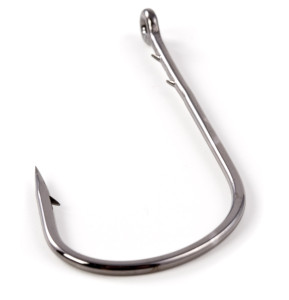Category Archives: Jordan Dane
Essential Twitter Hashtags for Authors, Readers and Publishing Industry Professionals
Twitter can feel like screaming into the void until you get a feel for the Twitterverse. If you tweet using a link to your blog post or website to draw traffic, you can check your blog or website stats to track the traffic from that link. Using Twitter in the right way can enhance your promo, but if you aren’t maximizing your tweets with hashtags, you’re not being as effective as you can be. That’s a waste of your precious time that you can’t afford. Here’s why:
To keep up with the latest in hashtags or look up ones you don’t understand, go to #TagDef. Below is a really good list to start with hashtags geared for authors, readers, and industry topics.
- #AmWriting
- #AmEditing
- #BookMarket (Every Thursday, 4 PM, ET)
- #IndieAuthors
- #LitChat (Every M/W/F)
- #MemoirChat (Bi-weekly Wednesday, 8 PM, ET)
- #WordCount
- #WritersLife
- #WriteChat
- #WriteTip
- #WriterWednesday (or #WW)
- #WritingParty
- #WritingTip
- #YALitChat
- #RomanceWriter
- #SciFiChat
- #KidLitChat
- #RWA (Romance Writers of America)
- #ACFW (American Christian Fiction Writers)
- #MGLit (Middle Grade Lit)
- #SCBWI (Society of Children’s Books Writers and Illustrators)
- #MemoirChat
- #AskAgent
- #AskAuthor
- #AskEditor
- #GetPublished
- #PromoTip
- #SelfPublishing
- #Publishing
- #EBooks
- #IndiePub (or #IndiePublishing)
- #BookMarketing
- #WritingPrompt
- #StoryStarter
- #WordAThon
- #Creativity
- #WIP (work in progress)
- #1K1H (write one thousand words in one hour)
- #FridayReads
- #BookGiveaway
- #Giveaway
- #Kindle
- #MustRead
- #Nook
- #Ebook
- #LitChat
- #StoryFriday
- #MustRead
Here is the Linky Tool:
A Freelance Editor Talks About Authors’ “Habits” & Predictable Writing
By Jordan Dane
I had the pleasure of working with Elyse Dinh-McCrillis (The Edit Ninja) on my short story anthology – Sex, Death and Moist Towelettes – and hope to send her more full-length novels. She came recommended from another thriller author – Brett Battles – so I owe him a beer. She is guest posting her thoughts on the patterns of authors. Enjoy!
Patterns in Writing
When Jordan approached me about a guest post, I decided to write about the patterns I’ve noticed in my clients’—and other authors’—work. These aren’t errors, but habitual things writers do that make their writing predictable. Most of my clients are surprised when I point them out, so it’s become clear these things happen unconsciously.
I’m not talking about a signature. One of Elmore Leonard’s signatures, for example, is his hip dialogue, with specific rhythms you can almost hear while reading. But the dialogue isn’t repetitive. I’d like to discuss things that show up repeatedly, and could potentially distract readers.
Here are some of the most common patterns I’ve seen, in everything from manuscripts by first-time authors, to finished novels by Pulitzer-nominated writers.
I was a beta reader for a friend and noticed he described many things in his novel as “dank”—basement, room, weather, smell, even mood. I suggested he substitute a few synonyms. He did a search and said, “I found only thirteen mentions in the whole ms. That’s not a lot!” I asked, “But how close were they together?” He admitted that in one instance, the word showed up twice in three pages. Astute readers would notice that.
In this one book I read, whenever the women were nervous, they bit their lower lips, and when the men experienced stress, they ran their hands through their hair. I started counting the number of times this happened, and could see it coming if characters started feeling stressed or anxious. I got so caught up in the counting, I lost track of what was going on in the plot.
Many writers fall into a rhythm as they write, which sometimes results in the same kind of sentence over and over: always starting or ending with a participial phrase, starting or ending a line of dialogue with a direct address, too much passive voice, multiple run-ons in the same paragraph, three short sentences in a row. (“He looks. He listens. He waits.”) All those stylistic choices are fine, but when one occurs too often, the writing becomes routine. Mix up the kinds and lengths of sentences, use them in different order, keep readers on their toes.
Sometimes writers get tied to one kind of speech pattern. I recently read a book by a well-known author in which many characters would eliminate the first words in questions: “That him?” “Help you?” “Hell you talking about?” It’s fine if one character talks like that, but I think a little old lady might say, “Is that him?”
In a novel I edited, there were characters named Linda, Lita, Lynn, Lila, Laura, Leslie, Lori (they were not related). I have a good guess as to what letter might be on the author’s monogrammed towels. In another ms, several of the names rhymed: Boris, Norris, Morris, Doris, Dolores. The thriller read like poetry.
This one book I read averaged one italicized sentence for every two paragraphs. So many things were important. The italics soon became mundane, which defeated their purpose.
A Checklist for Indie Authors – E-Book Retailers (Post 2)
To get my e-book into the hands of readers, I had decisions to make. Should I upload my book through a Distributor/Aggregator with bundled services for multiple retailers or load them directly onto the sites of individual retailers? If you have a number of titles from your backlist, this could seem daunting, but bear with me. Some retailers are easy to upload into directly, regardless of the number of titles you have, while others restrict authors who don’t have enough offerings to meet their initial minimum requirements.
As I stated in my first post on this series, if you upload to Amazon and B&N, you’ve covered 60-70% of e-books sold today. That’s a good place to start. I could have formatted my own books to save money, but I went through a service provider to do this as I continued writing my contracted books. My formatters created my e-book files for Sex, Death and Moist Towelettes & Dark Kiss through Amazon (Mobi), B&N (ePub), and Smashwords (.doc), plus my e-book and pdf file for my Print-on-Demand (POD) non-fiction book with a cover design for the front, spine, and back of One Author’s Aha Moments.
To optimize an indie author’s outreach and distribution efforts, I’m listing other options beyond Amazon and B&N in this blog series. Stay tuned for more in the weeks to come when I post about Distributors & Library Sales, Retailers with Volume Restrictions, and I draw some conclusions from all this in my final post on the indie author topic. I plan to launch a page on my Fringe Dweller blog where I will list indie resources and maintain them.
Below are the e-book retailers that allow anyone to upload content, no matter how many offerings you have or your publisher status. (Kobo will be mentioned in the next post, but there are many interesting changes happening that will put them on this list soon.) Please be aware that each of these sites operates under different formats and you should get familiar with their guidelines.
Amazon’s Kindle Digital Publishing (KDP) – Amazon’s primary e-book format is Mobipocket (Mobi) files, with or without DRM. Amazon currently dominates the market on e-book retail sales. Authors and publishers have access to an effective online retail outlet. Their royalty percentages are split by price point. Currently, that is 70% if your e-book is priced between $2.99 & $9.99, or 35% for all other price points. There is a small delivery charge based on size of file and royalties are paid monthly.
Barnes & Noble – B&N’s upload service is called PubIt!. PubIt! is similar to the Amazon KDP and gives indie authors the ability to upload a higher quality of ePub file that will not be lost through an automated conversion process where standards might be lower. The system also accepts Word, HTML, RTF, and TXT documents, which will be auto-converted to the ePub format.
Apple’s iBookstore – Apple’s iBookstore is open for authors and publishers to upload their own content. You must have a Mac computer to use the iTunes Producer program to upload the files. The signup process may seem intimidating, but an indie author can earn a higher royalty percentage by going direct and not through a distributor/aggregator. If you are unable to use Apple’s system because of limitations, the iBookstore provides a link of Approved Aggregators you can go through.
Google – Google’s e-book store allows readers to purchase PDF and ePub versions of your book, protected by the Adobe DRM. (Digital Rights Management is a term for any security measures designed to inhibit piracy.) The Google e-book store is part of the Google Books Partner Program. HERE is a link on their system requirements.
Lulu – Lulu uses ePub, PDF, and Microsoft Reader (LIT) formats, with and without DRM. Lulu is well-known for its Print-on-Demand (POD) services and an indie author can sell e-books through them. Lulu takes a cut of sales and there could be an additional fee to use the DRM option. Lulu is an Apple-approved aggregator for the iBookstore.
ebookMall – A $19.95 submission fee is waived until June 30, 2012. ebookMall uses ePub and PDF file types. Lightning Source could be an alternate source into this retailer.
Scribd – Scribd uses PDF files only and cannot sell other formats.
Smashwords – Smashwords works off a specific Word document style (HERE) that must be in accordance with the Smashwords Style Guide. That Word doc is auto-converted into 9 different formats at the author’s option. In addition to selling books at its own online store with the lowest fee of any retailer listed here (15%), the Smashwords Premium Catalog offers authors and small publishers a way to distribute their titles across a variety of retailers, including Apple’s iBookstore, the Sony eBook Store, Barnes & Noble, Kobo, and others.
In my next post, I will go into more detail on the various issues with a middleman distributor. Be aware that an indie author can have format issues by going through the conversion process and this can translate into downstream retailers taking issue with e-book quality from that distributor and YOU. Bottom line is, uploading directly to a retailer with relative ease might be your best option. You’ll see why in my next post when we talk about issues beyond formatting, like cumbersome and untimely price changes when going through a third party.
Some of this sounds daunting, but remember, if you’ve got your book onto Amazon and Barnes & Noble, you have your digital baby with the largest e-book retailers. Fine tuning your retailer outreach can be done as you have time. It doesn’t have to be done all at once. Many of these sites will take time away from your writing, so weigh the benefits against the time it takes for you to focus on this, but once you see how things go, you can fine tune where you will focus your retail and promotional efforts.
If you’re an indie author, please share your experiences with the retailers I mentioned and what has worked for you. If you are exploring the idea of self-publishing, do posts like this help you or intimidate you?
First Page Critique: The Year of the SSSSSnake
By Jordan Dane
My post series on self-publishing (post #2) will continue after this first-page critique. You know the drill. My comments on the flip side.
“Get out of here, little girl,” the voice on the phone said.
Looks like Casey is in real trouble. And they’ve got GUNS! (Sorry mystery author, but I had to clear the italics. Blogger went weird on me.) Overall, there is a lot to like about this intro. I get a sense of action and Casey’s POV is fun to read. I’m intrigued enough to turn the page, for sure, but there are improvements that could be made to tighten the opener.
Casey crouched behind the concrete block retaining wall and peered around the corner. Bright light shown from an industrial overhead light, illuminating the parking lot in back of the old computer parts shop.
This opening line didn’t do anything for me. The only thing of value here is the name Casey being introduced and a quick reference to the setting being a parking lot behind a parts shop. The author clearly is trying to establish that Casey can see what’s going on (their guns) because of the overhead light. I’m also not sure why a last name for the character is not given. If we are in the head of the character, they would not refer to themselves in the 3rd person, but at the start of a book, this is the one area you can mention the name and readers expect it. Sure, the name could be introduced in conversation, but why not mention it in the intro. The details mentioned in the first two lines might work better if they were included in tightened paragraph 2, such as:
Possible rewrite – Casey crouched in the dark watching five men dressed in black. They were loading long unmarked boxes into the back of a van parked behind an old computer parts shop. Three of them had guns. Guns. From behind a retaining wall, she squinted into the wash of the flood light they worked under, but couldn’t make out the van’s plate.
At the start of the next paragraph, there is an example of passive voice.
Passive-She was going to have to get closer.
Stronger-She had to get closer.
A job was a job, right? Brian had assured her it was a good one. Yeah, like he was at the top of her ’T for Trustworthy’ list. But he had said it paid well. In cash.
Although this is in Casey’s voice, it took me out of the action a bit, even though these lines are short. These lines made me wonder why she would do this job if she didn’t trust Brian. This reflects on her smarts too.
The author might have considered having Casey creep closer, out of her safety zone of the retaining wall and her bike, before she gets that creepy phone call from someone watching HER. Having said that, I would suggest that these lines be shortened to (if they apply): Brian promised her cash for the job, but how far could she trust another thief?
Still, guns. She blew out a breath. But cash. She nodded to herself. Get closer, check it out, then leave — fast — if… Yeah, if.
These lines are redundant (the guns and the cash) and don’t add anything. They TELL the reader what she wants to do, rather than SHOW them. The debate in her head reads a little choppy and is harder to follow. For me, it detracted from the action. I would rather SEE her getting closer with a build-up of tension before her cell vibrates.
The shadows were ink black from the light, but sparse. She glanced at her Kawasaki leaning a few feet away. Not exactly a stealth cycle. On foot, then. She shifted her weight, ready to dart behind a huge SUV three rows over. They won’t see you. The light’s too bright. Stay low. No noise. She swallowed, hard. They won’t see you.
The first line caused me to read it over. Shadows can’t be ink black with a light shining on them. I understand what the author meant, but this description made me reread it. Perhaps something like – Beyond the light, shadows were inky black.
This paragraph starts out with the shadows and how they won’t see her, but the Kawasaki lines interrupt this idea that is picked up at the end again. Casey’s thought process is out of sequence and leaps around as a result. How important is it to mention that she rode in on a Kawasaki (other than the chuckle factor)? Can that aspect wait until her getaway?
The Kawasaki made me chuckle and wonder what she was thinking. If she’s casing a place or doing anything in stealth, why ride in on a loud Kawasaki? And why even consider getting closer using her bike? (I’m guessing here, but is there a reason that the huge SUV is mentioned, like perhaps that a cop is on a stake out in that SUV and is the guy calling her at the end?)
Her hip vibrated.
This description pulled me out. Surely there is a better way to describe this. Her hip isn’t doing the vibrating. Her cell is.
She fell back, landing on her butt, scrabbling in the gravel to make sure she was out of sight behind the wall.
This sentence could be sharper. Something like – After landing on her butt, she scrambled and dove for cover.
She grabbed the phone and flipped it open. “What the fuck have you gotten me into, you slimy piece of shit?” she hissed in a harsh whisper. “They have guns, Brian. Guns.”
Using the F bomb on the first page has been mentioned before on TKZ as something to avoid. Although it doesn’t bother me, I do appreciate that other readers could be unnecessarily offended and this could detract from book sales and reviews. Something to consider.
I do love the fact that Casey gets a mysterious call from someone watching her at the end of this intro. Definitely makes the reader wonder what’s going on. I’d turn the page. How about you?
It takes a lot of guts to submit your work for critique. Kudos to the author. Having your work under a microscope on a blog for feedback, it is easy to comment on each line. I hope the suggestions made today strengthen your work. I always learn from these critique sessions. Thanks for your submission.
An Indie Author’s Checklist – A Look Behind the Curtain of OZ (Post #1)
This is post #1 in a blog post series that I hope you will find interesting—things that I have learned on my indie author journey. Since I’ve been fortunate enough to be published by HarperCollins and Harlequin Teen, I can see and appreciate the differences in what I will be doing as I self-publish. I’m discovering what my houses do behind the scenes for authors on the e-book front and realize that when I become an indie author, I will have to make choices on how to expand my distribution and retail visibility—ways my traditional publishers did for me without me knowing it.
My first recommendation for any indie author is to do your research on what’s involved. It’s not simply writing a story, editing it well, spending some coin to format and cover it, and uploading it onto Amazon and expect readers to find you. You first have to put out the best book you can, because quality will help you build a readership. Secondly, there is a business side that detracts from your writing time and you must be aware of how time consuming this can be. You won’t be able to load your book up and have readers flock to find you. It takes time to build a virtual shelf of quality work and expand your distribution. That’s why I wanted to share my experiences so you can research what will work for you and not spin your wheels, trying to gain traction.
This series of posts are intended to jumpstart your research, but for the purposes of discussion, I will lay out the decisions I had to make as I began. I’d spent time researching and building service provider contacts. I already had an infrastructure in place where I had an online presence, blogs, twitter accounts, Facebook pages, and many other sites that I have grown my online presence. A new indie author would not start where I did. They’d have to catch up and that takes time and money to set up your promotional foundation. This post is not intended to start from scratch. I’m sharing my experiences, starting from a spot where I already had insights into the industry. I hope what follows will help any author build on their expertise.
For me, the process started with me making decisions on which service to upload my books into after I’d done my initial due diligence into self-publishing. I knew I would upload to Amazon and B&N. They provide comprehensive systems that make the process easy and their reach encompasses most of the e-books being sold today. So realize that if you upload to Amazon Kindle and B&N Nook, you are probably reaching 60-70% of the digital books being sold. In a quickly changing world, however, the shift in technology could change this dynamic, but for now I’m comfortable with my digital offerings being on these two sites. For many established authors, who want to step foot into the indie world, this might be enough. But it’s not enough for an indie author with dreams of finding another way to make a living and who might be starting from scratch.
A traditional publisher uses its name to aggregate digital books to retailers and provides the latest offerings in a bundle. They support and build an infrastructure to get their books into as many viable venues as possible, to get books into the hands of today’s online readers. An indie author is on their own to figure out how to expand their reach and what to promote, but traditional houses have resources en masse with staff to support that effort. For an indie author to learn what works—and to grow what they know— they must navigate uncharted waters of Distributors and Retailers that are willing to allow self-published authors or small houses to have the same access as larger publishing houses.
I thought it would be interesting to break down what I’ve learned into five posts and create a future page of resource links on my FRINGE DWELLER blog for indie authors that I will maintain for myself and to share. My hope is to demystify the process of self-publishing so authors can make informed business decisions on how to get their work in the hands of readers directly. Ultimately, this will become a comprehensive “how to” book on author promotion that will cover various topics from branding and online presence, to press kits and resources, with practical tips on distribution. This indie process has educated me and will continue to do so.
But in doing this, I’m also realizing what my traditional houses have been doing for me and appreciate their efforts. I’m hoping to maintain a balance that works for me where I can still have projects through traditional publishers, but reap the benefits and gain experience with being an indie author for certain projects. Sustaining my online presence and growing my name recognition will hopefully be a benefit and a WIN-WIN for any house I work with as I self-publish. By expanding my reach, I can also give my agent more to represent.
Even authors who have no plans to self-publish can gain an appreciation for what goes on behind the scenes beyond your desk, your publisher, and your friendly retailer—because today’s readers have many ways to discover books outside the brick and mortar stores.
Here are the bullet point topics I will cover in this blog post series:
1.) Introduction (Post #1)
2.) E-Book Retailers – A Checklist Place to Start (Post #2)
3.) Distributors & Library Sales (Post #3)
4.) Retailers with Volume Restrictions or Limited Access (Post #4)
5.) Conclusions & Introduction to My Resource Page (including review sites receptive to indie author books by genre) (Post #5)
Please share your questions and topic suggestions that you hope I will cover so I can target the focus of my series. I’d appreciate your input.
In the mean time, I hope you will indulge me in a little blatant self-promotion for my first ever self-published offerings.
 ONE AUTHOR’S AHA MOMENTS (92-page POD, e-book) is geared toward aspiring authors and has an emphasis on the Young Adult genre. These writing tips may also be helpful to experienced authors and those who write other genres. My advice comes from my personal experiences on writing fiction for adult and teen markets and what has worked for me. Topics include: Young Adult fiction themes, voice, and characteristics; how to create characters editors look for & give them a unique voice; plot structure that even a non-plotter can love; how to hook your book; the writer’s life, goal setting, editing, book promotion and more.
ONE AUTHOR’S AHA MOMENTS (92-page POD, e-book) is geared toward aspiring authors and has an emphasis on the Young Adult genre. These writing tips may also be helpful to experienced authors and those who write other genres. My advice comes from my personal experiences on writing fiction for adult and teen markets and what has worked for me. Topics include: Young Adult fiction themes, voice, and characteristics; how to create characters editors look for & give them a unique voice; plot structure that even a non-plotter can love; how to hook your book; the writer’s life, goal setting, editing, book promotion and more.
My first anthology of short stories—SEX, DEATH & MOIST TOWELETTES (e-book)—is now available. It’s a mix of stories from crime fiction noir to paranormal, with my brand of dark humor. As a teaser for anyone not familiar with my adult paranormal writing, I’m releasing DARK KISS (e-book) as a single short story from the anthology for a discounted price.
First Page Critique: Shopping Can Be Deadly (& Fun)
by Jordan Dane
Yesterday, in my office she told me that for the past two weeks she had been followed while shopping in Beverly Hills and hired me to find out who it was. She didn’t feel threatened but she wanted him stopped.
The expensive streets in Beverly Hills were filled with bustle and haste on this Valentine’s Day buying posh presents and keeping out of the rain. I got out of my ’94 Tercel and glanced around the soaked street. I wasn’t the only one watching my client. A dark haired man, with a deep tan and dressed in a brown plaid suit fit Mrs. Donefield’s description. And yes, he was definitely watching that body too. I felt professional, finding my man right away.
Mr. Plaid looked directly at me, checked his watch, then turned his gaze back to Juicy Couture the boutique Mrs. Donefield had just entered. I knew this guy had no idea of who I was but to look inconspicuous, I also looked at my watch and tapped my foot as if waiting for my girlfriend. Little did he know Janice broke up with me two months ago. She didn’t believe my new business venture would generate a large income. So far, she was right.
Mrs. Donefield emerged from the store after a few minutes of shopping. I watched her out of the corner of my eye. Too busy waiting for my pretend girlfriend, I didn’t notice that the Mr. Plaid was gone.
Detective Rule #3: You can lose a sock when doing laundry but don’t lose the guy stalking your client.
Okay, by the end of this book, I can see the author doing an anthology on all the “Guy” rules, the “World according to Graff.” All anyone would need is a Craig’s list ad and they’d be in the PI business. This has a classic PI feel to it, but it’s updated with the appealing wit of the author. I definitely want to read more of this story.
The first line pulled me out a little. “I checked my watch and then the wet windshield.” The wet windshield might be a way for the author to comment on the weather, but it struck me as odd that anyone watching a vivacious woman (and client) would notice the drops of rain on the windshield, especially on their first case.
In the first paragraph, the words “on his first case” are redundant after the very funny Rule #13. I’m sure this clever author can think of many ways to get this across another way, like “a twenty-seven year old private investigator with a newly minted license with the ink still wet and a week old ad on Craig’s list.”
“…her highly pilates-ized body was covered with St. Somebody’s fashions and her back was covered by me, Guy Graff…” This is a very funny way to introduce the first person POV character, without the reader waiting too long to know who the voice is. (I love the character name too.)
This sentence should be broken apart or revised since the subject—streets—cannot buy posh gifts. “The expensive streets in Beverly Hills were filled with bustle and haste on this Valentine’s Day buying posh presents and keeping out of the rain.” The streets can be filled with bustle and haste (I like that description), but a secondary subject needs to be added to make this grammatically correct. Also, the word “expensive” when describing the word “streets” is a miss for me too. The “shops” are expensive, unless streets in Beverly Hills are made of gold, which they might be.
“’94 Tercel” – Priceless! Nuff said.
“Little did he know Janice broke up with me two months ago. She didn’t believe my new business venture would generate a large income. So far, she was right.” This little aside by Guy is so funny. The author jabs in a touch of back story, but does it with humor that also reflects on Guy. He thinks he’s being clever with his toe tapping “technique.” I love this.
The way this submission ended is priceless too. “Too busy waiting for my pretend girlfriend, I didn’t notice that the Mr. Plaid was gone. Detective Rule #3: You can lose a sock when doing laundry but don’t lose the guy stalking your client.” I love how the author spells out Rule #3 by starting with losing a sock in the laundry. This not only makes the character very relatable, but it endears him to the reader as well.
Summary – First person POV works so well in this story. It’s classic PI, but the humor of this character shines through and the reader will want to stay in his head, especially if the funny rule making descriptions continue. It’s like Guy is making stuff up as he goes and these rules will come more from his mistakes than his successes. Each thought feels as if it comes straight out of Guy’s head and that not only reflects on what’s happening, but each line also shows his self-deprecating humor, his opinion of his surroundings, and his nature.
Whoever wrote this, thanks for the laugh and I wish you well! Great stuff. What did you think, TKZ?
First Page Critique: Beware the Wolf
By Jordan Dane
Please enjoy Beware the Wolf, an anonymous submission for critiquing, My thoughts are on the flip side.
***
Hoards of onlookers pushed and shoved to the front as they congregated behind the yellow tape, all hoped to see the mutilated body. Police huddled, compared clues, and discussed the who, the how, and the why of the crime. They may work and eventually answer who and how, but the why will always be a mystery.
Derek Mitchell reached for the tape, ducked below it and entered the crime scene. He waved a moth from his face as he stepped around the temporary lights.
“Hey.” A scowling officer pointed at him.
He held up his ID. “I have authorization to be here,” he said in a low voice. The man retreated.
He turned his head, and studied every detail of the park. Hours before the killing, children played on the slides and swing sets feet from where the body now lay. Oak trees and crepe myrtles surrounded the area, which provided ample cover for the attacker to wait for a victim. The location would indicate a random murder. Only, he knew this victim wasn’t random. The why is what he needed to understand in order to stop future killings.
Uniformed officers searched the flora with flashlights looking for clues, bagging every gum wrapper and lollipop stick, while two detectives stepped back from the corpse and waved the medical examiner forward.
He arrived too late. He needed to examine the body and area before the authorities arrival to detect fragile clues. He approached the examiner. “I need a few minutes to examine the evidence.”
The man nodded and walked back to his van.
He took a deep breath and raised the crimson stained sheet. It appeared to be a wild animal attack. The skull peeked through deep gouges of skin and muscle. The throat open, exposed the larynx, which was the source of blood that now seeped into the ground. Eyes, wide, stared into nothingness.
A shiver ran down his spine. To the human eye, a dog or wild animal killed her. Only he knew the truth. One of his people killed her.
***
Critique
The author sets a dark tone from the start – a crime scene with a dead body—but the punch of the last couple of paragraphs might work better if their essence were moved to the front of this scene to put the reader right into the action as seen through the eyes of a different kind of detective. Derek could be looking right down at the body and gathering “clues” in his own way.
With Derek walking up to the crime scene—and with the scene description so generic without details—these parts could always be described later during the course of the next narratives, if they are still important to the scene. Readers of crime fiction are familiar with aspects of a crime scene. To write it so generally is almost like waving a red flag that the author is glossing over details they may not be as familiar with. This sentence is a good example of too generic with POV problems: Police huddled, compared clues, and discussed the who, the how, and the why of the crime. Derek would not know what’s in the heads of the police or what they’d been discussing, so this reads like a bit of author intrusion.
If the author clues the reader in from the beginning that Derek isn’t quite human, he/she can build in his “abilities” to read a crime scene like a wolf. Derek could sense the fear from the crowd as he searches the bystanders. (Killer sometimes watch the cops work at scenes where they killed.) He could search the faces through the eyes of a predator at night, for example.
Sniffing the air, he could be drawn to the smell of blood and the splatter before he even sees the body. He might overhear snippets of distant conversations between the human detectives mixed with chatter from the crowd, since he has wolf instincts. Don’t go too crazy with this. That could slow the pace. Tease the reader with the set up, but leave more for later. For now, the author should “think” and “react” like a feral wolf. Since dogs/wolves can recognize scents off specific animals, does he have the same ability? Does he “mark his territory”? (Just kidding, but you get the idea.) Use your imagination on what his instincts are and why he’s a cop working “special cases.”
Another point – the author describes the park, right down to the oak trees and crepe myrtles as making “good cover.” Trees and shrubs could be cover, but why mention the variety? This reads like the author is using Derek’s POV to set the scene in a manner that would not be natural for a cop. It’s forced.
I’m also not sure how Derek would know from the start that the victim wasn’t a random kill. He’d have to establish a relationship between the vic and the killer, which is typical cop procedure that is backtracked after more is known about the victim’s life and a timeline of her activities that led up to the killing. But the first step in any investigation is to ID the victim, which isn’t mentioned here either.
If the attacker hid behind cover and waited for any victim to show up, that’s random, yet Derek seems to have an unexplained reason for knowing this wasn’t a random act of violence. Rather than spell all this out in the first 350 words, the author might focus on Derek’s instincts and his ability to read a crime scene in his feral way and leave the details/clues of the case to be discovered later. The intriguing part would be Derek, his instincts and abilities, and the conflict he faces being an outsider to both worlds—as a cop who isn’t human.
The author mentions that Derek “arrived too late,” but I would venture an opinion that he could detect far more than the average human who needs specific evidence to build a case. He wouldn’t need a human ME’s opinion of what happened and fragile clues would be his specialty. Is Derek trying to stay ahead of the cops to wield his kind’s brand of justice? Does he keep secrets to that end? Or does he work with human cops to keep the peace? Derek is the ultimate “lone wolf” cop.
There is definitely enough here to make me turn the pages. There are inherent conflicts in this scenario of an outsider cop working his own cases, sometimes at odds with humans and perceived as betraying his own kind. Plus he’d be tracking a killer with greater abilities to evade pursuit—a classic outsider theme that could be fascinating to explore. Good job of conceiving this plot, character, and conflict!
Author Affirmations with Stuart Smalley
by Jordan Dane
I’ll be on a panel at the Romance Writers of America annual conference in Anaheim in July – “The Care and Feeding of the Writer’s Soul.” Ever since I committed to doing it, I’ve been pondering my contribution and examining my own practices when it comes to nurturing my writer’s spirit.
But I wanted to open the topic up for discussion here to get your input. If you could create a box of affirmations for the writer, what would be your personal contribution?
On my computer I have been collecting sayings that have meant something to me over the years. These have come from author speaking engagements, emails, or things I’ve found online that inspired me enough to post it where I could see them every day. Affirmations can be reminders of author craft you want to repeat or they can be a way to keep a positive attitude or make progress in your career.
Here are a few sayings on my computer that mostly deal with author craft:
“Stick with the action.” Romance author Dana Taylor
When I muddled an intro action scene with back story, Dana wrote these words in an email after she critiqued the scene.
“Be there.” James Patterson
Patterson was a speaker at am RWA conference in 2004. He filled a ballroom, standing room only. By these two words he meant to put your reader into the scene using all their senses. He also said that he puts as much care into the first sentence of each chapter as he does the first line in any book. (I wonder if all the James Patterson(s) do this?)
“Trust the talent.” Robert Crais
I heard Crais present this on a video he sent via email in one of his newsletters. He talked at length about how he writes in constant fear, but that he trusts the talent that has brought him his success. It reminded me that all people have doubts. That’s human nature, but when you have a natural storyteller inside you, you should trust it.
“Get in, make your point, then get the hell out.” Robert Gregory Browne
Rob spelled this out when he explained ELLE on a blog post. Enter Late, Leave Early. The method is best explained by the TV show “Law & Order” where the scenes are sharp, concise, and don’t over-explain to slow pacing. The barest essentials of the scenes are captured to move the story along and a viewer’s mind fills in the gaps in action. The same works for books.
Here are a few that would be my contribution to keep a positive mental attitude:
“I strive to be better with every book. My best story is always my next one.”
“I touch new readers with every story.”
“My books are unique because they are filtered through me and my personal experiences. I’m not in competition with anyone, except me, to be the best author I can be.”
Here are a few silly ones:
“I never get my page numbers wrong. I must be good at math.”
“When I kill people on paper, they stay dead. Booya!”
As for practices to keep me positive, I have a shredding ritual for any rejection to expel the negativity from my house. Try it. It’s liberating. When I complete any project, I also treat myself with something that isn’t food—time off, vacation, fun evening with friends or family, attend a book signing, buy a new outfit. I used to think that each positive step in my quest to become a published author was only a small part of a longer future—that celebrating too much is a distraction that can swell your head. But now I celebrate everything. Life’s too short not to cherish even the smallest of pleasures.
Please share your thoughts. What would you write and contribute to an author’s affirmation box? What practices do you have to keep your mind positive and your writer’s soul nourished?
Hook Your Book
By Jordan Dane
High concept story lines are based on an intriguing premise or hook. A hook is the same thing as a logline, best described as a 1-2 line TV guide listing. A short pitch line takes a complex book plot and summarizes it down to an enticing teaser. Generally this teaser is the first step to conveying your novel idea to an editor or agent, whether in a query letter, proposal, or during a pitch session at a conference.
Elements of your hook line should include:
Main Characters
Conflict
Unique Qualities
Setting/Time Period
Main Action
Emotional Element
Important questions to ask in order to define your hook:
Characters – Who is the main character? What does he or she want? What is their goal?
Conflict – What is the obstacle in the way? Who will play the part of the villain? Does the main character have a flaw that adds to the drama of why he can’t get what he/she wants?
Setting/Time Period – What is unique about your setting or time period? Does it contribute to the conflict for the character?
Main Action – What is the most compelling action in the story?
Emotional Element – What is the most gripping emotional element to your story?
Even if your story has been told before, you can add a fresh take or twist on it. An effective hook can make it seem new. High concept hooks can also be based on “what if” questions like:
I’d like to share the hook on two books that I enjoyed reading. These represent daring authors who didn’t take the easy road in determining their plots. Imagine the craft it would take to write these two novels. Better yet, read them and enjoy.
The Book Thief by Markus Zusak – The story of a 14-year old girl living during the time of the Holocaust, narrated by Death. The hook is the author’s narrator choice. The time period is very compelling and the fact that the girl steals books to teach herself to read during a time when books are being destroyed is a gripping period piece, but to have Death be the narrator puts this book over the top. The New York Times is quoted as saying this book is “life changing.” All I can say is that it changed me.
Thirteen Reason Why by Jay Asher – This is the story of a girl who commits suicide but sends 13 audio tapes to the people who contributed to her making that fatal decision. The audio tapes are an effective hook, but the writer chose to tell the story through one boy who got a recording. He was the one person who had a secret crush on this girl, but did nothing about it. The story is told one night as he listens to the intimacy of her voice in his ear as he follows the map to all the locations she sends him to. Recorded flashbacks mix with the present, but the reader never loses track of what is taking place.
Here is the hook for my latest series with Harlequin Teen – The Hunted series. In this series, kids who can’t speak out, without drawing attention to who and what they are, make the perfect victims on the streets of LA. A covert faction of a church hunts them under the guise of doing God’s work—to stop the abominations from “becoming.” The tag line on the cover will be: They are our future, if they survive.
A fanatical church secretly hunts “Indigo” teens feared to be the next evolution of mankind. These gifted teens are our future…if they survive.
For those of you writing a project now, please share your hook. Take up to 3 lines. Even if you don’t have a current project, make something up that you’d like to write and have fun using the questions above. You never know what might pop up.




